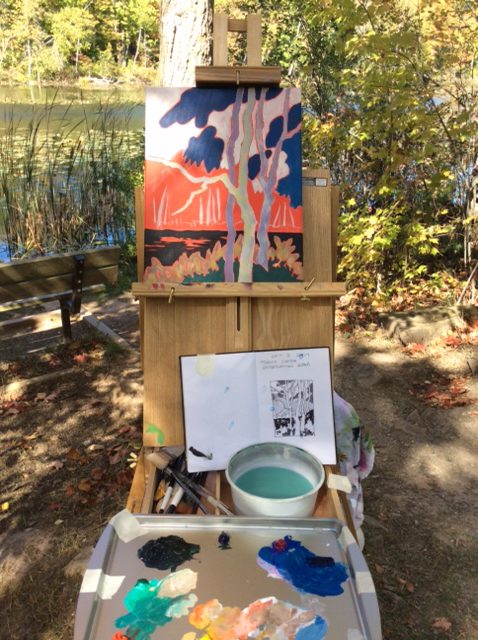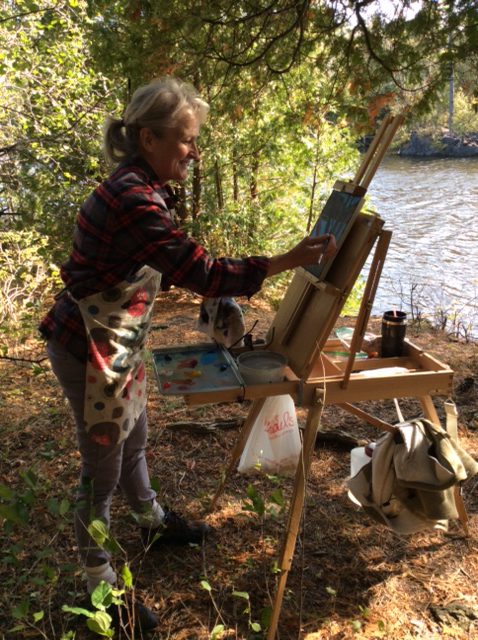
During these trying times it is increasingly more important to get outside to stretch your legs and your mind. If you find yourself in an artistic slump, and no wonder, being outdoors is a fantastic way to replenish your creativity. A marvellous activity to do is painting “plein air” which means painting outside on location. You could head to a neighbourhood park or woodlot or conservation area. Even your own backyard could hold subject matter worth painting. It could also be an urban setting of a cityscape or rural area of farmhouses and meadows. The thrill is just being outside and diving into the moment. There is an immediacy of standing in front of your subject and just simply getting down to painting it, without a lot of fuss and planning.

So what might you need to take with you for painting on location? If you are working in oils or acrylics you might like to invest in an wooden folding artist’s easel also known as a French easel. The legs can be adjusted to various heights for uneven ground and once opened it holds all different sizes of canvasses and there is room for your palette. When you are done it can be folded down into a compact briefcase size piece of luggage for easy carrying. It also has a drawer to store your paints and brushes inside. When painting with acrylics bring along 2 large water bottles with you, one full of clean water for painting and one empty bottle to pour your dirty paint water into to take home. You don’t want to be polluting the environment. I use 4 litre size water jugs, after filling my water bowl I bungee cord the water filled jug to my easel to help stabilize it.

Another handy item is a specially designed collapsible art umbrella that protects you from rain and sun that clips onto your easel. It also shields your painting and paints from direct sunlight. Acrylics dry quickly so you may want to buy a bottle of liquid acrylic retarder to add to your paint to lengthen your painting time. Moistening your canvas before you start to paint can help as well.
A cheap nonstick cookie sheet makes a great mixing palette although I found my acrylic paints still stuck to it. Yikes! Since then I have learned to line it with a piece of cooking parchment paper. I clip the paper to the edges of my cookie sheet so it doesn’t slide around or blow away on a windy day. I then masking tape the whole cookie sheet to my easel.
You will also need a bowl to hold water for washing out your brushes, rags or paper towels, masking tape, a small art journal for sketching and a pencil, a small spray bottle to keep paints moist and don’t forget to bring drinks and snacks. Things always taste better outdoors! I enjoy standing while I paint but some might like to bring a small stool or camp chair to use. Be sure to take photos of your chosen location so you can paint from those reference shots in your home studio later. The best part, painting or not, is the opportunity to view new scenery and breathe the fresh air. Happy exploring!